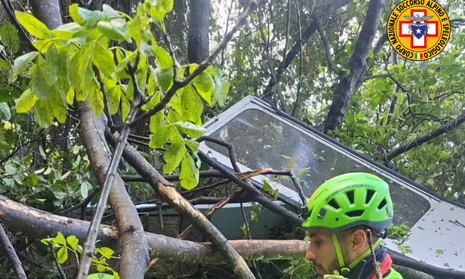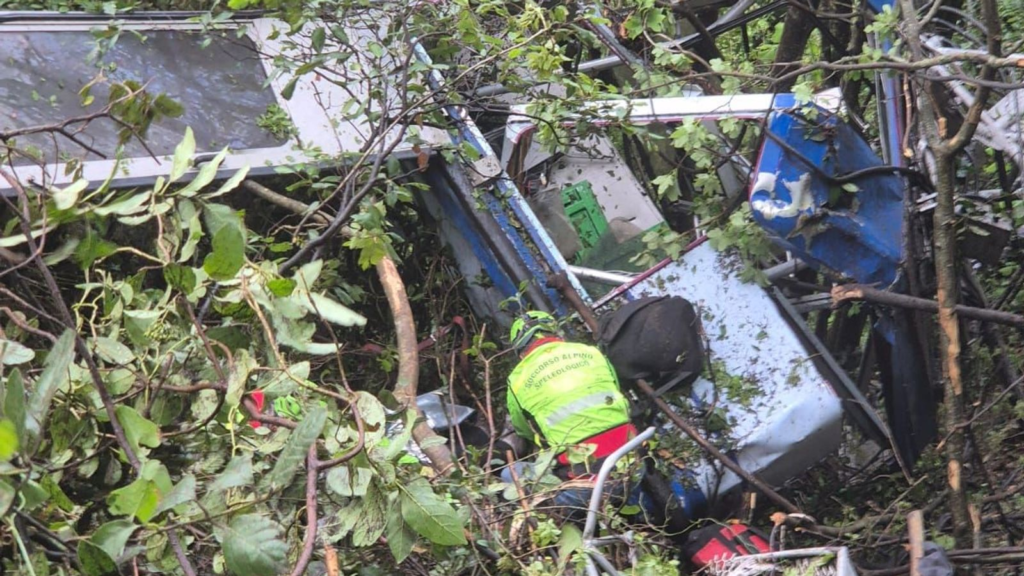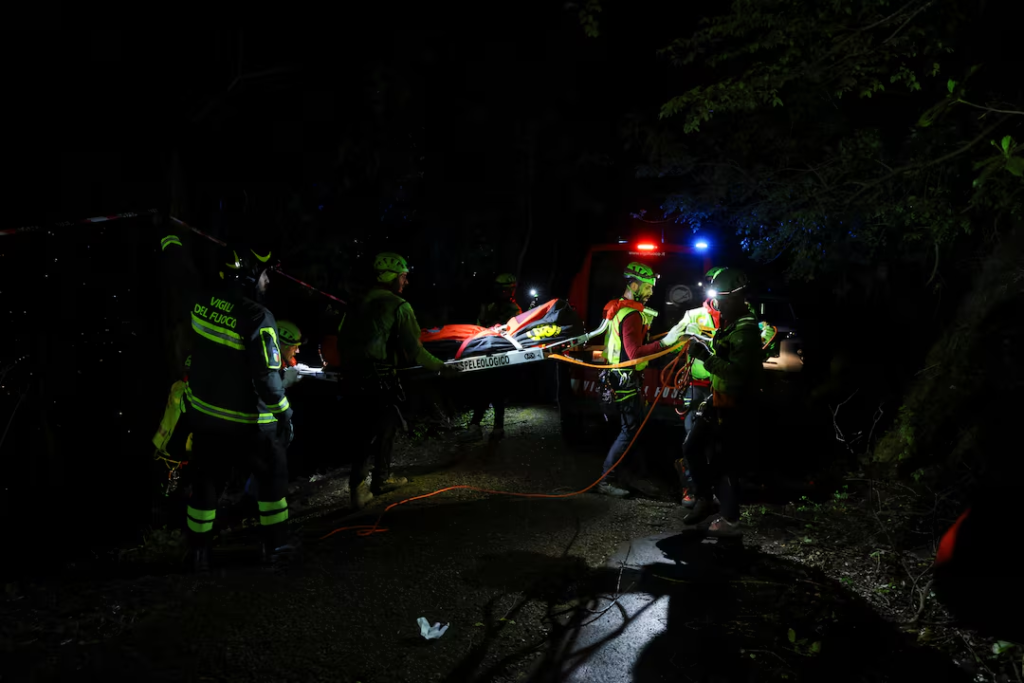Tragic Cable Car Crash in Naples Claims Four Lives, Including Two British Tourists
A cable car crash on April 17, 2025, near Naples, Italy, has claimed four lives, including two British tourists. One person remains in critical condition.

The incident occurred when a cable snapped on the Monte Faito cable car line. The cabin plummeted to the ground in Castellammare di Stabia, about 45 kilometers southeast of Naples.
Authorities called the event an “unimaginable tragedy.” Investigators are now working to uncover the cause and evaluate the safety of the cable car system, which had just reopened 10 days before.
What Happened?
The crash happened around 3:00 p.m. local time on the route between Castellammare di Stabia and Monte Faito, a scenic 1,100-meter peak. As the cabin approached the top station, a steel support cable snapped. With no support, the cabin dropped several meters, slammed into a pillar, and rolled down the slope. The violent fall shattered the cabin.
The crash killed four people: two British tourists, an Israeli woman, and the Italian operator, Carmine Parlato. A second Israeli tourist survived but suffered multiple fractures. Rescuers airlifted the survivor to Ospedale del Mare hospital in Naples, where they remain in critical condition.

High winds and thick fog likely added strain to the cable system. These conditions also made rescue efforts difficult. Over 50 firefighters and mountain rescue teams worked late into the night to reach the site.
A second cable car, which carried eight tourists and an operator, got stuck mid-air near the base of the mountain. Rescue teams evacuated all passengers safely using harnesses. No additional injuries occurred.
The Monte Faito cable car spans 3 kilometers and has been operating since 1952. The route offers panoramic views of Mount Vesuvius and the Bay of Naples, making it a favorite with tourists. It had reopened on April 10 after winter maintenance. This crash is Italy’s deadliest cable car disaster since 1998, when a U.S. military jet cut a ski lift cable in the Dolomites, killing 20 people.
Where Did It Happen?
The crash occurred on the Monte Faito cable car line, which connects Castellammare di Stabia with Monte Faito. Located in the Monti Lattari mountain range, Monte Faito draws visitors for its views of Naples, Mount Vesuvius, and nearby Sorrento and Pompeii. The cable car plays a key role in the region’s tourism industry, especially during the high season.
Who Runs the Cable Car?
Ente Autonomo Volturno (EAV), a regional public transport company, operates the Monte Faito cable car. EAV manages rail and cable services in Campania. Its chairman, Umberto De Gregorio, called the crash “unimaginable and unforeseeable.” In a statement to RAI, he said the system passed all required checks before reopening.
“The cable car reopened 10 days ago with all the required safety conditions,” he stated.
Still, the crash has raised public concerns about the cable car’s maintenance and oversight. A similar crash on the same line in 1960 also killed four people. This history underscores the need for stronger safety protocols.
What Do We Know So Far?
Initial investigations suggest that the snapped cable caused the crash. The emergency brake system failed to stop the cabin’s fall. Investigators are looking into whether high winds, cable fatigue, or poor maintenance played a role.

The Public Prosecutor’s Office in Naples has launched an investigation. The charges include “culpable disaster and culpable homicide.” This suggests they are exploring possible negligence or mismanagement.
Local media reports said the cabin was “almost at the station” when the cable broke. The fall happened quickly, with little time for any safety system to respond. Fog and wind may have added stress to the old infrastructure, but officials have not confirmed the exact cause.
Experts are examining weather reports, maintenance logs, and safety certifications. They aim to determine whether human error, mechanical failure, or natural forces triggered the disaster.
Who Is Responsible?
Right now, no one has taken responsibility. EAV claims the cable car met all safety standards. Still, the crash has drawn sharp criticism. Some say the company may not have tested the system enough before reopening.
Mayor Luigi Vicinanza of Castellammare di Stabia called for a full investigation. “There will come a time when it will be necessary to ascertain the causes of this tragedy, in respect to those who are no longer here today,” he wrote on Facebook.
Read this:
Critics also point to the cable car’s past accidents and the difficulty of maintaining older systems in harsh weather. Since the ride had just reopened, people are asking if enough stress testing was done. So far, these are only questions without official answers.
Authorities will review every detail: inspection reports, repair records, and even the weather leading up to the crash. Only then can they determine what went wrong—and who, if anyone, was at fault.
How Did Leaders React?
Italian Prime Minister Giorgia Meloni, in Washington at the time, sent her condolences. She expressed sympathy for the victims and their families. Naples Mayor Gaetano Manfredi also offered his condolences. “I express deep condolences, on behalf of the Metropolitan City of Naples and myself, for the victims of the tragedy,” he said.
Vincenzo De Luca, head of the Campania region, praised the rescue teams. He highlighted the difficult conditions they faced and their dedication to saving lives.
Messages of sympathy poured in from around the world. Officials have not released the names of the victims, as their families are still being notified.
What’s Next?
Now that rescue work has ended, focus has shifted to the investigation. Officials must explain how a cable car crash happened just days after it passed safety checks. The system, once a symbol of tourism, now serves as a warning about the risks of aging infrastructure.
For grieving families, the main concern is justice. They want answers about what caused the tragedy and how it could have been prevented.
Investigators are working quickly but carefully. The Public Prosecutor’s Office plans to release preliminary findings in the coming weeks. These results could reveal if this was a freak accident or a preventable disaster.

